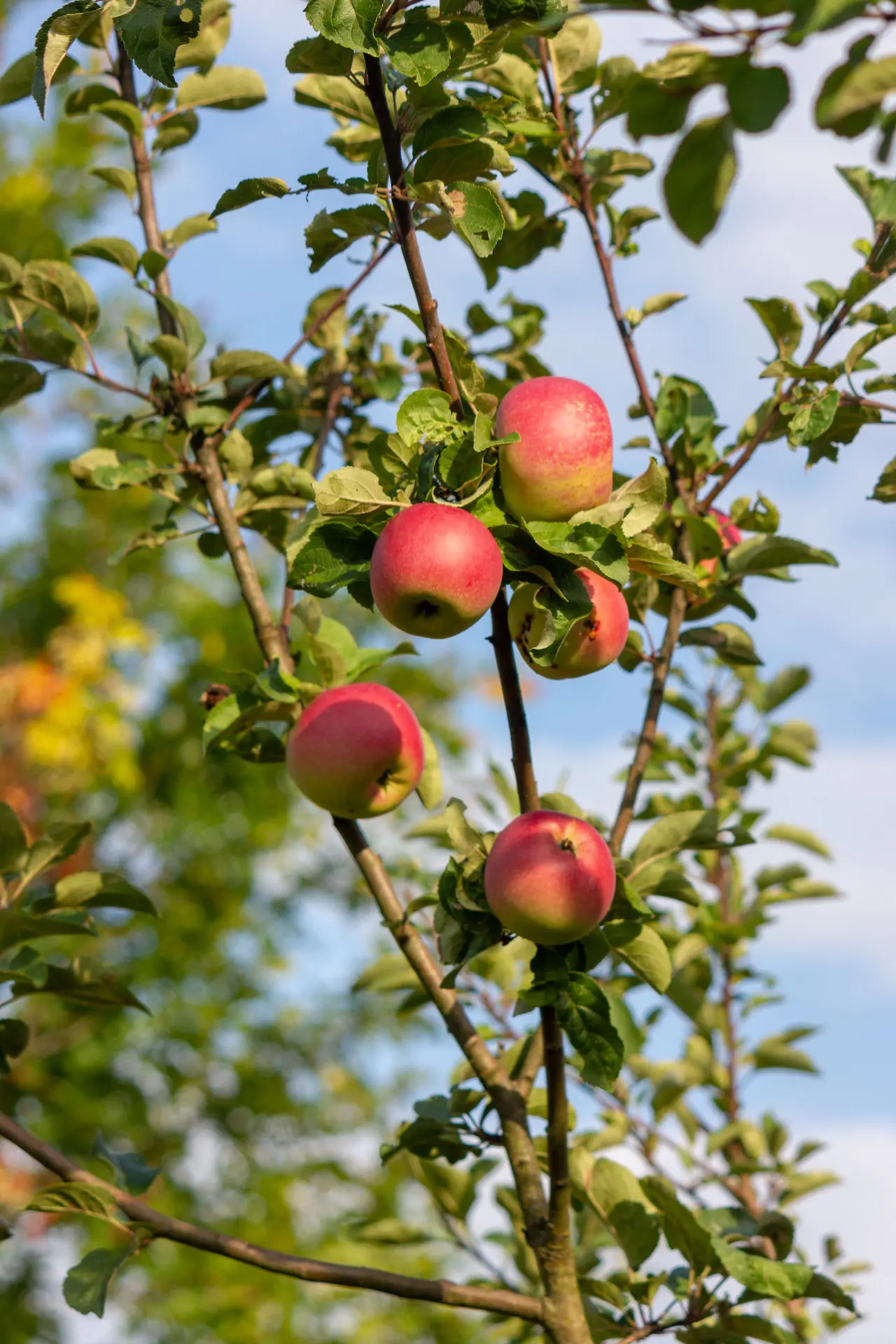Get The Most Out of Your Apples from Backyard Eats
Harvesting Apples
When It’s Ready
- Check for mature color: Fruit should have developed their characteristic color. For apples, this can vary based on the variety, but they should be firm and fully colored.
- Look for ease of separation: Twist the fruit gently, and if it easily detaches from the branch, it is ready for harvest.
- Harvest in the morning: Harvesting in cooler temperatures helps preserve the fruit’s quality.
- Late summer to fall, depending on the variety (usually August – October)
When It’s Too Late
- Overripe fruits become soft, mealy, and may start to decay.
- Regularly check your trees to ensure you harvest the fruits at their peak ripeness.
How To
- Hold the fruit firmly and twist it upwards or give it a gentle upward tug to detach it from the tree.
- Place the harvested fruits carefully in a container or basket, being mindful not to bruise or drop them.
- Handle the fruits with care to prevent any damage to the skin or flesh.
About Apples
Apples are trees that can grow 10-20 feet tall for semi-dwarf varieties. They require full sun and pruning to thrive, and a pollinating pair to reproduce.
Flowering/Fruiting Tendencies
Semi-dwarf apple trees, ideal for home gardeners, typically bloom profusely in spring, followed by a generous fruit set. Their manageable size makes them perfect for small gardens, ensuring ample harvests of crisp, flavorful apples without overwhelming space.
Design Notes
These trees are tailored for home landscapes, boasting a compact form that suits urban gardens or cozy backyard orchards. Their balanced canopy not only offers aesthetic appeal but also facilitates easy maintenance and harvesting, making them a delightful addition to any garden design.
Care Notes
For home gardeners, semi-dwarf apple trees require attention to pruning, ensuring an open canopy to maximize sunlight penetration and air circulation, which promotes healthy growth and reduces disease susceptibility. Regular watering, especially during dry spells, coupled with organic fertilizers tailored to fruiting trees, fosters robust development and a bounty of delicious apples. Additionally, integrated pest management practices, such as monitoring for common pests like aphids or codling moths, and timely intervention with organic remedies, ensure a thriving orchard with minimal ecological impact.
Newly planted perennials require some additional care to help establish and support the plants as they grow. Water newly planted perennials deeply at the root 2-3 times a week during the first growing season. Apply compost and wood chip mulch in the late winter/early spring.
Storing Apples
Fresh Storage: Keep fresh apples in a cool, dark place, such as a pantry or cellar, away from direct sunlight, for up to a month.
Long-Term Storage: Wrap each fruit individually in newspaper or place them in a ventilated container in a cool, humid environment, ideally around 32-40°F (0-4°C), such as a root cellar or refrigerator, for up to several months.

Cooking With Apples
- Apple Pie: Slice and cook apples with sugar, cinnamon, and a touch of lemon juice, then bake them in a pastry crust until golden and bubbly. Apple pie is a classic and comforting dessert enjoyed by many.
- Applesauce: Cook peeled and diced apples with sugar, cinnamon, and a bit of water until they soften and break down. The resulting applesauce can be enjoyed on its own, used as a topping for pancakes or oatmeal, or used as a filling for desserts.
- Apple Crisp: Combine sliced apples with sugar, cinnamon, and a squeeze of lemon juice, then top them with a crumbly mixture of oats, flour, butter, and brown sugar. Bake until the apples are tender and the topping is golden and crisp.
- Apple Muffins or Pancakes: Fold diced apples into muffin or pancake batter for a burst of sweetness and texture. Apples add moisture and flavor to these breakfast treats.
- Waldorf Salad: Combine diced apples with celery, walnuts, and raisins, then toss them with mayonnaise or a light dressing. This classic salad showcases the sweet and crunchy elements of apples.
- Apple Chutney: Cook diced apples with onions, vinegar, sugar, and spices like ginger, garlic, and chili flakes. The resulting chutney offers a sweet and tangy condiment that pairs well with cheeses, cold cuts, or curries.
- Baked Apples: Core whole apples and fill the cavity with a mixture of sugar, cinnamon, and butter. Bake until the apples are tender and caramelized. Serve them warm with a drizzle of caramel sauce or a scoop of vanilla ice cream.




